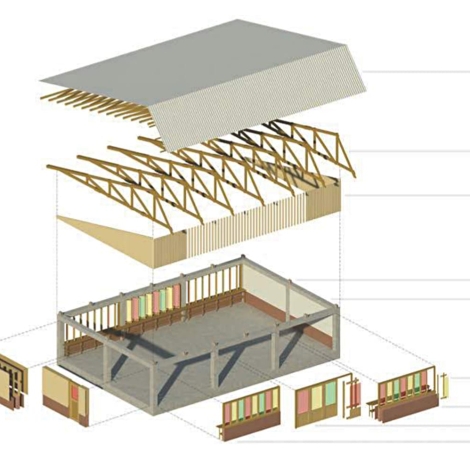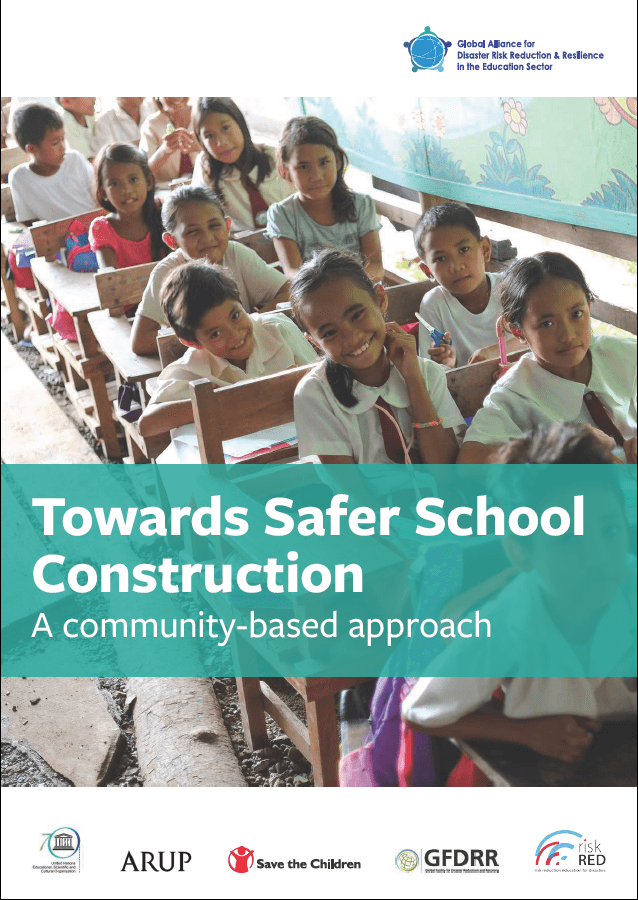The field manual Towards Safer School Construction: A Community Based Approach has quickly begun to inform and affect standards of development practice and humanitarian response. Written by Save the Children and Risk RED, the manual has been adopted by dozens of organizations building educational infrastructure and deployed in numerous countries around the world.
See Towards Safer School Construction: A Community Based Approach, listed on Engineering For Change’s solution library.
Schools often represent much more to a community than just an educational institution for children. Not only do schools serve as community centers for gatherings and recreation, they are regularly employed as shelters during environmental disasters. School buildings therefore need to be held to a higher safety standard. The buildings not only protect the lives of the youngest members of a community, but they also need to endure the forces of extreme weather and disaster to protect an entire community. The team at Save The Children recognized those facts as they set out to develop this manual. The text outlines the priorities and goals for planning, designing and building a school through the essential participation of community residents.
The document is structured into five chronological sections: Prepare, Plan, Design, Construct, Maintain. It is intended for the use of humanitarian and development actors that are working in hazard-prone areas, government authorities seeking to introduce community-based school construction programs, and for disaster management practitioners in the education sector. Presented in clear, simple English, each chapter is spotted with graphic diagrams and visual aids; and shares a number of case studies that present relevant lessons along the way.
The manual’s proposed program and sequence seeks to raise awareness of hazards within communities and support a broader “culture of safety.” Towards this goal, sub-chapters focus on methods of illustrating risk and the establishment of joint-action plans designed to help communities respond in the aftermath of a disaster.
Rebekah Paci-Green, the manual’s lead author, currently conducting field research in Nepal, says that the technical details and programmatic goals found within the manual are slowly starting to find their way into the designs of shelters that neighbor schools built according to the manual. That organic uptake is testament to the broad applicability of the document and its contribution to the area of design, construction and risk reduction.
This manual is one of 18 documented in the Habitat sector on Engineering For Change’s Solution Library, an online knowledge source for entrepreneurs and practitioners working in innovative products in the tech for development space. Ranging from tool kits on the structural rehabilitation of buildings, to the development of flood-resilient infrastructure, this sub-category of manuals reflects our intention to expand into methods of design, development, and humanitarian response.
See all of the Habitat-sector field manuals in E4C’s Solutions Library.
If you know of any manuals or documents that you think should be included, please let us know in the comments below, or send an email to solutions@engineeringforchange.org.

